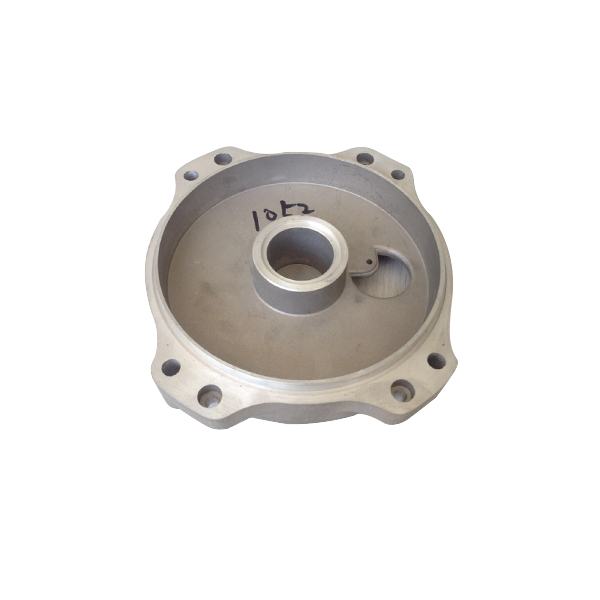Mobile:+86-311-808-126-83
Email:info@ydcastings.com
Understanding the Role of Exhaust Manifolds in Engine Performance and Efficiency
Exhaust Manifold in Engine An Overview
The exhaust manifold is a critical component of an internal combustion engine. This integral part plays a significant role in directing exhaust gases away from the engine and into the exhaust system, ultimately allowing the vehicle to operate efficiently. Understanding the design, function, and maintenance of the exhaust manifold is essential for anyone interested in automotive engineering or vehicle maintenance.
Design and Construction
The exhaust manifold is typically made from cast iron or stainless steel, materials chosen for their ability to withstand the high temperatures and corrosive environment within the engine bay. The design of the manifold varies depending on the engine type and its intended application. In most cases, the manifold is a single unit that collects exhaust gases from multiple cylinders and funnels them into a single exhaust pipe.
Some engines, particularly those with higher performance demands, utilize a tuned exhaust manifold that is designed to optimize the flow of exhaust gases and enhance engine performance. These tuned systems often feature a more complex shape and may include equal-length runners to ensure that each cylinder's exhaust gases reach the collector at the same time, thereby improving scavenging and increasing power.
Functionality
The main function of the exhaust manifold is to guide exhaust gases from the engine's combustion chambers to the exhaust system, which includes components such as the catalytic converter, muffler, and tailpipe. When the engine operates, it generates a significant amount of heat and pressure. The exhaust manifold is designed to withstand these extreme conditions while minimizing the risk of leaks or failures.
By collecting gases from each cylinder, the exhaust manifold helps maintain balanced pressure within the engine, which is crucial for optimal performance
. A well-functioning exhaust manifold ensures that the engine breathes properly, allowing it to perform efficiently and produce the required power output.
exhaust manifold in engine

Issues and Maintenance
Over time, the exhaust manifold can be susceptible to various issues that may affect engine performance. Common problems include cracks, warping, or leaks, which can lead to an increase in emissions, reduced fuel efficiency, and a decrease in overall performance. A cracked manifold can create a loud exhaust noise, known as an exhaust leak, and can potentially allow harmful gases to enter the engine bay.
Regular inspection and maintenance of the exhaust manifold are essential to ensure its longevity and functionality. Mechanics often check for signs of wear, such as visible cracks or discoloration due to heat. When problems are detected, it may be necessary to repair or replace the manifold. It’s crucial for vehicle owners to address these issues promptly, as neglecting them can lead to more severe engine problems and costly repairs.
Improving Performance
For performance enthusiasts, upgrading the exhaust manifold can be a popular modification. Aftermarket options are available that promise improved airflow, reduced back pressure, and increased horsepower. These upgrades are particularly common in sports cars and vehicles that undergo heavy modifications for racing or off-road applications.
However, when considering modifications, it is important to ensure that any new components are compatible with the existing engine setup and do not violate emissions regulations in the owner’s region. Proper tuning of the engine may also be required to take full advantage of enhanced exhaust flow.
Conclusion
In summary, the exhaust manifold is a crucial component of an automobile’s engine, serving the primary function of directing exhaust gases out efficiently. Understanding its design, functionality, and maintenance needs can significantly affect the overall performance of a vehicle. Vehicle owners should pay attention to the health of the exhaust manifold and consider it when making modifications for better performance. Proper care and timely repairs can help ensure that the engine operates smoothly, efficiently, and with lower emissions, contributing to a healthier environment.
-
Impeller Technology That Powers Precision in Pump SystemsNewsMay.22,2025
-
Valve Durability Begins with Quality Cast Iron ComponentsNewsMay.22,2025
-
Performance Cooling with Advanced Automobile Water Pump SolutionsNewsMay.22,2025
-
How Motor Housing and Oil Pans Shape Engine PerformanceNewsMay.22,2025
-
How Metal Castings Drive Modern Manufacturing EfficiencyNewsMay.22,2025
-
Exploring the Engineering Behind Valve Body CastingsNewsMay.22,2025











